#klavdi
Explore tagged Tumblr posts
Text
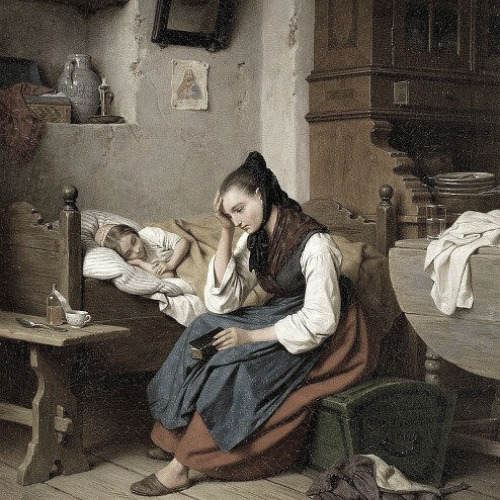


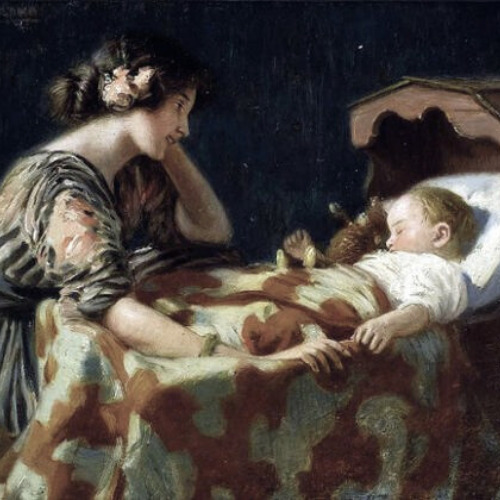
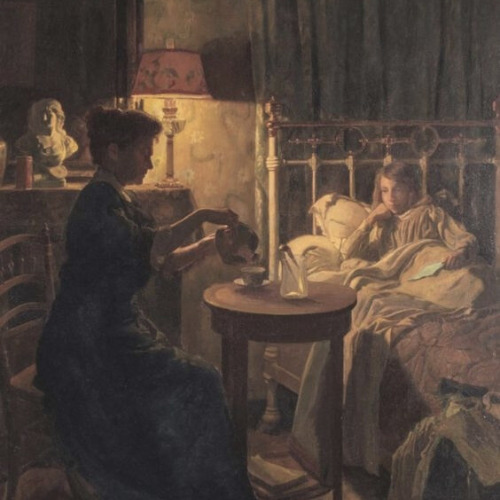
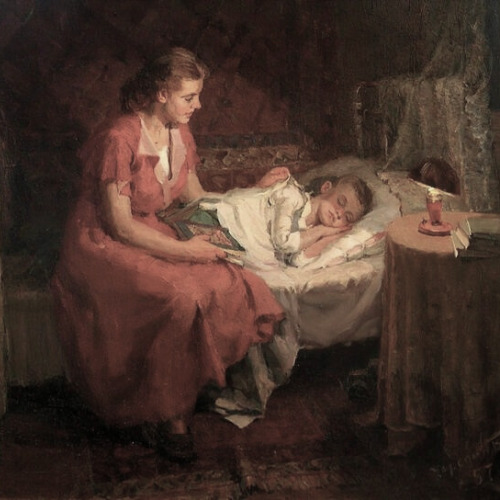
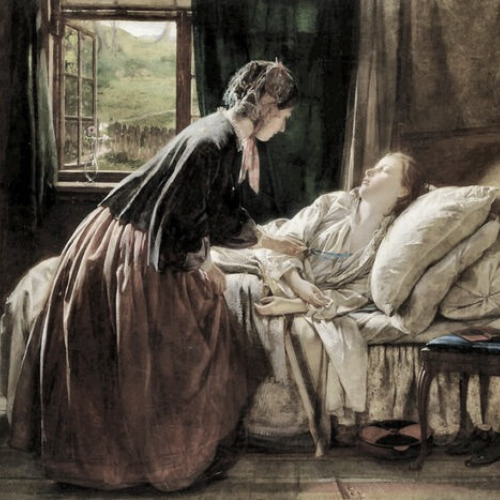
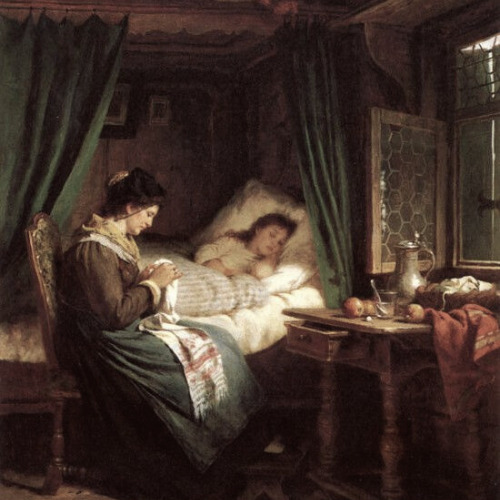

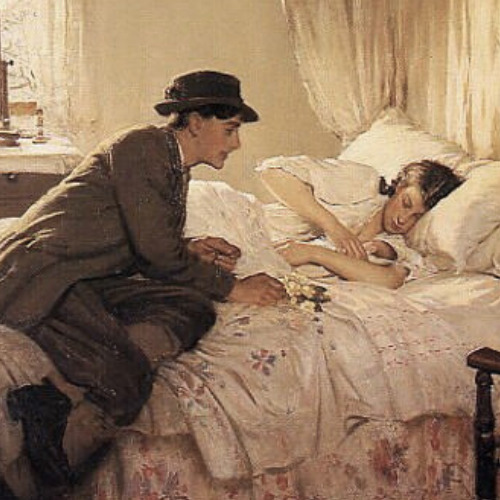
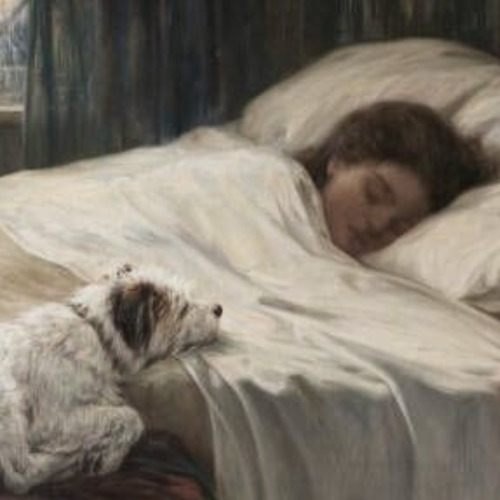

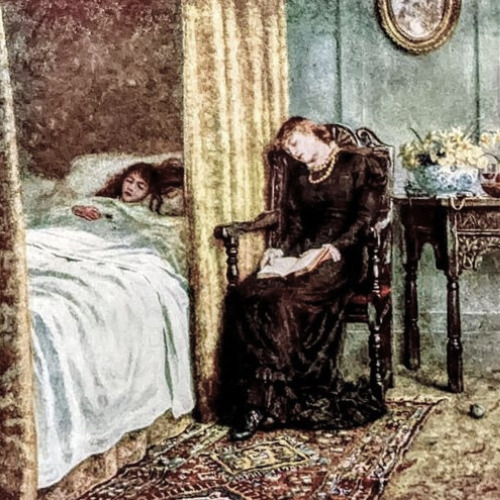
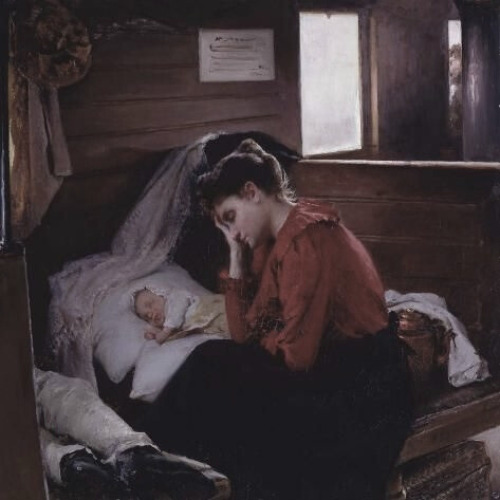
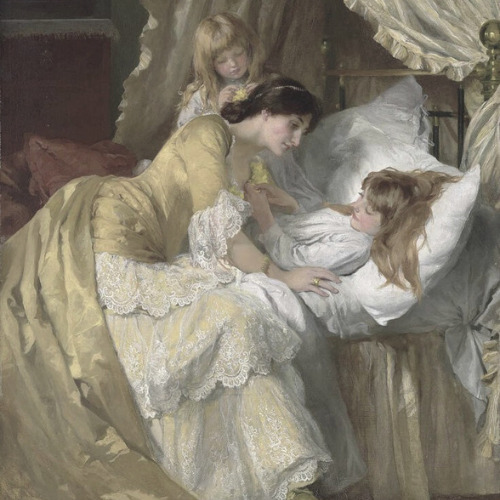
by your bedside
#artist is friedrich eduard meyerheim#artist is sophie anderson#artist is george elgar hicks#artist is harry roseland#artist is marcel rieder#-cant find artist#artist is edwin thomas roberts#artist is rudolph epp#artist is charles clyde squires#artist is fred elwell#artist is robert morley#artist is laura theresa alma-tadema#artist is helen allingham#artist is klavdy lebedev#artist is mary gow#art#art history#artedit#arthistoryedit#*mine*
494 notes
·
View notes
Text

"Princess Sofia", painting by Klavdy Lebedev
Russian vintage postcard
#old#postcard#postkaart#russian#painting#vintage#briefkaart#postal#ansichtskarte#sofia#ephemera#photography#klavdy#photo#princess#postkarte#tarjeta#klavdy lebedev#lebedev#historic#sepia#carte postale
17 notes
·
View notes
Text




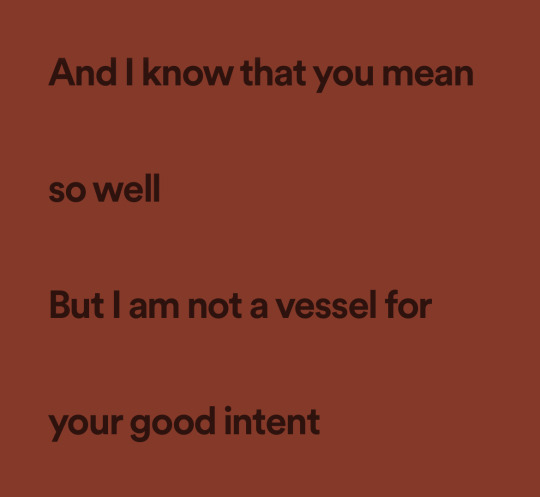





Lestat de Lioncourt
“Don’t You Wonder Sometimes” (2011) - Tracy K. Smith // Portrait of Boy - Klavdy Lebedev // Salt. (2013) - Nayyirah Waheed // “The Last Midnight” (1987) - Stephen Sondheim // “Teeth and Tongues” (2012) - The Crane Wives // I Await the Devil’s Coming (1902) - Mary MacLane // The Rape of Ganymede (1636-38) - Peter Paul Rubens // Deathless (2011) - Catherynne M. Valente // “Behind Blue Eyes” (1971) - The Who // the boy i love left me for a revolution (2013) - Elisabeth Hewer
75 notes
·
View notes
Text

The Fall of Novgorod depicts the capture of the City of Novgorod by Ivan III in 1478. Ivan had the city bell—a symbol of self-governance by the citizens—taken down and transported to Moscow. In the painting Marfa Boretskaya, the mayor's widow and leader of the resistance…
Please follow link for full post
Novgorod,Klavdy Vasilyevich Lebedev,Russian,Paintings,War,History,fineart,Zaidan,Marfa Boretskaya,Arthistory,Biography,Artists,footnotes,
01 Work, The Art of War, Klaudii Vasilievich Lebedev's The Fall of Novgorod, with footnotes
0 notes
Text
The Side Look of a Barcelonese #1 405 : Winter waves leap the shore, Lake Superior coastline. © Claudio Vanin aka Klavdi :
The Side Look of a Barcelonese #1 405 : Winter waves leap the shore, Lake Superior coastline. © Claudio Vanin aka Klavdi :
#claudio vanin#klavdi#the side look of a barcelonese#choice of the day of the mag#choice of the day of YWAMag#art#abstract#canadian photographers#italian photographers#emotions#b and w#artists on tumblr#photographers on tumblr#contemporary art#original photography#masterpieces#reflections#masters on tumblr#b y n#magic#abstract expressionism#blur#composition#original content
4 notes
·
View notes
Photo

Capture of bear in woods • Klavdy Lebedev, 1907
129 notes
·
View notes
Photo

Klavdi Vasilievich Lebedev (b.1852 - d.1916), ‘Boyarina’, c.1903, Russian, sold for $180,000 USD in Shapiro’s Auctions, April 2009
Purchased in 1937 by Leon Leonidoff, Chief Producer of Radio City Music Hall in New York City; owned thence by descent.
#klavdi vasilievich lebedev#klavdi lebedev#boyarina#russian#1900s#shapiro#unknown sitter#known artist
7 notes
·
View notes
Text

Klavdy Vasiliyevich Lebedev (Russian, 1852-1916)
A Girl in a Pavloposadky Shawl
oil on canvas
9 notes
·
View notes
Photo

Portrait of a Boyar Woman - Klavdy Lebedev
55 notes
·
View notes
Photo

In the theater (В тереме) Klavdy Vasiliyevich Lebedev (1906)
#realism#oil on canvas#klavdy lebedev#long hair#painting#art#fine art#woman#braid#Klavdy Vasiliyevich Lebedev#Клавдий Васильевич Лебедев#Клавдий Лебедев#in the theater#В тереме#длинные волосы#коса#russian
1 note
·
View note
Photo

was known as Scythia. Beginning in the 8th century BC, Ancient Greek traders brought their civilization to the trade emporiums in Tanais and Phanagoria. Ancient Greek explorers, most notably Pytheas, even went as far as modern day Kaliningrad, on the Baltic Sea. Romans settled on the western part of the Caspian Sea, where their empire stretched towards the east.[dubious – discuss][43] In the 3rd to 4th centuries AD a semi-legendary Gothic kingdom of Oium existed in Southern Russia until it was overrun by Huns. Between the 3rd and 6th centuries AD, the Bosporan Kingdom, a Hellenistic polity which succeeded the Greek colonies,[44] was also overwhelmed by nomadic invasions led by warlike tribes, such as the Huns and Eurasian Avars.[45] A Turkic people, the Khazars, ruled the lower Volga basin steppes between the Caspian and Black Seas until the 10th century.[46] The ancestors of modern Russians are the Slavic tribes, whose original home is thought by some scholars to have been the wooded areas of the Pinsk Marshes.[47] The East Slavs gradually settled Western Russia in two waves: one moving from Kiev toward present-day Suzdal and Murom and another from Polotsk toward Novgorod and Rostov. From the 7th century onwards, the East Slavs constituted the bulk of the population in Western Russia[48] and assimilated the native Finno-Ugric peoples, including the Merya, the The establishment of the first East Slavic states in the 9th century coincided with the arrival of Varangians, the traders, warriors and settlers from the Baltic Sea region. Primarily they were Vikings of Scandinavian origin, who ventured along the waterways extending from the eastern Baltic to the Black and Caspian Seas.[49] According to the Primary Chronicle, a Varangian from Rus’ people, named Rurik, was elected ruler of Novgorod in 862. In 882, his successor Oleg ventured south and conquered Kiev,[50] which had been previously paying tribute to the Khazars. Oleg, Rurik’s son Igor and Igor’s son Sviatoslav subsequently subdued all local East Slavic tribes to Kievan rule, destroyed the Khazar khaganate and launched several military expeditions to Byzantium and Persia. In the 10th to 11th centuries Kievan Rus’ became one of the largest and most prosperous states in Europe.[51] The reigns of Vladimir the Great (980–1015) and his son Yaroslav the Wise (1019–1054) constitute the Golden Age of Kiev, which saw the acceptance of Orthodox Christianity from Byzantium and the creation of the first East Slavic written legal code, the Russkaya Pravda. In the 11th and 12th centuries, constant incursions by nomadic Turkic tribes, such as the Kipchaks and the Pechenegs, caused a massive migration of Slavic populations to the safer, heavily forested regions of the north, particularly to the area known as Zalesye.[52] The Baptism of Kievans, by Klavdy Lebedev The age of feudalism and decentralization was marked by constant in-fighting between members of the Rurik Dynasty that ruled Kievan Rus’ collectively. Kiev’s dominance waned, to the benefit of Vladimir-Suzdal in the north-east, Novgorod Republic in the north-west and Galicia-Volhynia in the south-west. Ultimately Kievan Rus’ disintegrated, with the final blow being the Mongol invasion of 1237–40[53] that resulted in the destruction of Kiev[54] and the death of about half the population of Rus’.[55] The invading Mongol elite, together with their conquered Turkic subjects (Cumans, Kipchaks, Bulgars), became known as Tatars, forming the state of the Golden Horde, which pillaged the Russian principalities; the Mongols ruled the Cuman-Kipchak confederation and Volga Bulgaria (modern-day southern and central expanses of Russia) for over two centuries.[56] Galicia-Volhynia was eventually assimilated by the Kingdom of Poland, while the Mongol-dominated Vladimir-Suzdal and Novgorod Republic, two regions on the periphery of Kiev, established the basis for the modern Russian nation.[19] The Novgorod together with Pskov retained some degree of autonomy during the time of the Mongol yoke and were largely spared the atrocities that affected the rest of the country. Led by Prince Alexander Nevsky, Novgorodians repelled the invading Swedes in the Battle of the Neva in 1240, as well as the Germanic crusaders in the Battle of the Ice in 1242, breaking their attempts to colonize the Northern Rus’., and the Meshchera.The establishment of the first East Slavic states in the 9th century coincided with the arrival of Varangians, the traders, warriors and settlers from the Baltic Sea region. Primarily they were Vikings of Scandinavian origin, who ventured along the waterways extending from the eastern Baltic to the Black and Caspian Seas.[49] According to the Primary Chronicle, a Varangian from Rus’ people, named Rurik, was elected ruler of Novgorod in 862. In 882, his successor Oleg ventured south and conquered Kiev,[50] which had been previously paying tribute to the Khazars. Oleg, Rurik’s son Igor and Igor’s son Sviatoslav subsequently subdued all local East Slavic tribes to Kievan rule, destroyed the Khazar khaganate and launched several military expeditions to Byzantium and Persia. In the 10th to 11th centuries Kievan Rus’ became one of the largest and most prosperous states in Europe.[51] The reigns of Vladimir the Great (980–1015) and his son Yaroslav the Wise (1019–1054) constitute the Golden Age of Kiev, which saw the acceptance of Orthodox Christianity from Byzantium and the creation of the first East Slavic written legal code, the Russkaya Pravda. In the 11th and 12th centuries, constant incursions by nomadic Turkic tribes, such as the Kipchaks and the Pechenegs, caused a massive migration of Slavic populations to the safer, heavily forested regions of the north, particularly to the area known as Zalesye.[52] The Baptism of Kievans, by Klavdy Lebedev The age of feudalism and decentralization was marked by constant in-fighting between members of the Rurik Dynasty that ruled Kievan Rus’ collectively. Kiev’s dominance waned, to the benefit of Vladimir-Suzdal in the north-east, Novgorod Republic in the north-west and Galicia-Volhynia in the south-west. Ultimately Kievan Rus’ disintegrated, with the final blow being the Mongol invasion of 1237–40[53] that resulted in the destruction of Kiev[54] and the death of about half the population of Rus’.[55] The invading Mongol elite, together with their conquered Turkic subjects (Cumans, Kipchaks, Bulgars), became known as Tatars, forming the state of the Golden Horde, which pillaged the Russian principalities; the Mongols ruled the Cuman-Kipchak confederation and Volga Bulgaria (modern-day southern and central expanses of Russia) for over two centuries.[56] Galicia-Volhynia was eventually assimilated by the Kingdom of Poland, while the Mongol-dominated Vladimir-Suzdal and Novgorod Republic, two regions on the periphery of Kiev, established the basis for the modern Russian nation.[19] The Novgorod together with Pskov retained some degree of autonomy during the time of the Mongol yoke and were largely spared the atrocities that affected the rest of the country. Led by Prince Alexander Nevsky, Novgorodians repelled the invading Swedes in the Battle of the Neva in 1240, as well as the Germanic crusaders in the Battle of the Ice in 1242, breaking their attempts to colonize the Northern Rus’. http://bit.ly/2QEoE9t
0 notes
Text
Barn là gì
Barn
About Hatnote [[Image:Zalmon Read Barn back view.jpg|thumb|Timber framed with siding of vertical boards was typical in early New England. Red is a traditional color for paint. [[Connecticut]].]] [[Image:TTCdairybarn.jpg|thumb|The [[Texas Technological College Dairy Barn]] in [[Lubbock, Texas]], U.S., was used as a teaching facility until 1967.]] [[File:Лебедев Гумно 1894.jpg|thumb|Russian women using a hand powered [[winnowing]] machine in a threshing barn. Note the board across the doorway to prevent grain from spilling out of the barn, this is the origin of the term threshold.Oxford English Dictionary Second Edition on CD-ROM (v. 4.0) © Oxford University Press 2009. Threshold. Painting from 1894 by [[Klavdy Lebedev]] titled the floor or the threshing floor (Гумно).]] [[File:GrangeBarn-interior.jpg|thumb|[[Grange Barn, Coggeshall|Grange Barn]], [[Coggeshall]], England, originally part of the Cistercian monastery of Coggeshall. Dendrochronologically dated from 1237–1269, it was restored in the 1980s by the Coggeshall Grange Barn Trust, Braintree District Council and Essex County Council.]] [[File:Barn Barberêche Mar 2011.jpg|thumb|A bridge barn in Switzerland. The bridge (rather than a ramp) in this case also shelters animals.]] A ”’barn”’ is an agricultural building usually on [[farm]]s and used for various purposes. In the [[North America]]n area, a barn refers to structures that house [[livestock]], including [[cattle]] and [[horse]]s, as well as equipment and fodder, and often grain.Allen G. Noble, ”Traditional Buildings: A Global Survey of Structural Forms and Cultural Functions” (New York: Tauris, 2007), 30. As a result, the term barn is often qualified e.g. tobacco barn, dairy barn, sheep barn, potato barn. In the [[British Isles]], the term barn is restricted mainly to storage structures for unthreshed cereals and [[fodder]], the terms ”’byre”’ or ”’shippon”’ being applied to [[cow]] shelters, whereas horses are kept in buildings known as [[stables]].archiveurl=https://web.archive.org/web/20121102204240/http://dictionary.reference.com/browse/byre On the Continent, however, barns were often part of integrated structures known as [[byre-dwelling]]s (or [[housebarn]]s in US literature). In addition, barns may be used for equipment storage, as a covered workplace, and for activities such as [[threshing]]. ==Etymology== The word ”barn” comes from the [[Old English]] ”bere”, for barley (or grain in general), and ”aern”, for a storage place—thus, a storehouse for barley.Oxford English Dictionary Second Edition on CD-ROM (v. 4.0) © Oxford University Press 2009. Barn, n. “Another word for ‘barn’ in Old English was ”beretun,” “barley enclosure” (from ”tun”: ‘enclosure,’ ‘house’,archivedate=2013-10-29 referenced 4/19/2013 or ”beretun” (barton), also meaning a threshing floor.Bosworth, J.. ”A Dictionary of the Anglo-Saxon Language”…. London: Longman, Rees, Orme, Brown, Green, and Longman, 1838. 50. Print. In historical times, the barn was to be distinguished from the [[granary]], which was used to store threshed grain or cut off ears. Now, however, the common English name for a grain storage building is [[granary]]. Modern barns may include a [[stable]], from Latin ”stabulum” ‘stall, fold, aviary’ (literally “a standing place,”),http://www.etymonline.com date=2007-07-13 Stable ”byre” (‘cow shed’, from ”bower” which is from Old English ”bur”— “room, hut, dwelling, chamber,” from Proto-Germanic *”buraz” (cf. Old Norse ”bur” “chamber,” Swedish ”bur” “cage,” Old High German ”bur” “dwelling, chamber,” German Bauer “birdcage”)…”,http://etymonline.com url=https://web.archive.org/web/20130420044417/http://etymonline.com/ Byre or [[animal stall|stall]], “…place in a stable for animals,” from Old English ”steall” “place where cattle are kept, place, position,” and Proto-Germanic *”stallaz” (cf. Old Norse ”stallr” “pedestal for idols, altar,” Old Frisian ”stal”, Old High German ”stall” “stand, place, stable, stall,” German ”Stall” “stable,” Stelle “place”.http://etymonline.com url=https://web.archive.org/web/20130420044417/http://etymonline.com/ Stall ==History== The modern barn largely developed from the three [[aisle]]d medieval barn, commonly known as [[tithe barn]] or monastic barn. This, in turn, originated in a 12th-century building tradition, also applied in [[hall]]s and ecclesiastical buildings. In the 15th century several thousands of these huge barns were to be found in Western-Europe. In the course of time, its construction method was adopted by normal farms and it gradually spread to simpler buildings and other rural areas. As a rule, the aisled barn had large entrance doors and a passage corridor for loaded wagons. The storage floors between the central posts or in the aisles were known as [[bay (architecture)|bays]] or mows (from Middle French ”moye”).Malcolm Kirk, ”The Barn. Silent Spaces”, London 1994; Graham Hughes, ”Barns of Rural Britain”, London 1985; Walter Horn, ‘On the Origins of the Medieval Bay System’, in: ”Journal of the Society of Architectural Historians” 17 (1958), nr. 2, p. 2-23. The main types were large barns with sideway passages, compact barns with a central entrance and smaller barns with a transverse passage. The latter also spread to Eastern Europe. Whenever stone walls were applied, the aisled [[bent (structural)|timber frame]] often gave way to single-naved buildings. A special type were [[byre-dwelling]]s, which included living quarters, byres and stables, such as the [[Frisian farmhouse]] or [[Gulf house]] and the [[Black Forest house]]. Not all, however, evolved from the medieval barn. Other types descended from the prehistoric [[longhouse]] or other building traditions. One of the latter was the [[Low German house|Low German (hall) house]], in which the harvest was stored in the attic.Jeremy Lake, ”Historic Farm Buildings. An Introduction and Guide”, London 1989; Eric Sloane, ”An Age of Barns. An Illustrated Review of Classic Barn Styles and Construction”, New York 1967, 4th ed. 2005; Jean-René Trochet, ”Maisons paysannes en France et leur environnement, XVe-XXe siècles”, Paris 2007. In many cases, the New World colonial barn evolved from the Low German house, which was transformed to a real barn by first generation colonists from the Netherlands and Germany.John Fitchen, ”The New World Dutch Barn. A Study of its Characteristics, its Structural System, and its Probable Erectional Procedures”, Syracuse N.Y. 1968. ==Construction== [[Image:Beautiful Post and Beam Horse Barn.JPG|thumb|The skeleton of a post and beam horse barn just after raising]] [[Image:Round barn Indiana.jpg|thumb|px|right|[[Thomas Ranck Round Barn]] in [[Fayette County, Indiana]], U.S.]] In the U.S., older barns were built from [[timbers]] hewn from trees on the farm and built as a [[Crib barn|log crib barn]] or [[Timber framing|timber frame]], although stone barns were sometimes built in areas where stone was a cheaper building material. In the mid to late 19th century in the U.S. barn framing methods began to shift away from traditional timber framing to “truss framed” or “plank framed” buildings. Truss or plank framed barns reduced the number of timbers instead using dimensional lumber for the rafters, joists, and sometimes the trusses.url= https://books.google.com/books?id=M7swAQAAMAAJ The joints began to become bolted or nailed instead of being mortised and tenoned. The inventor and patentee of the Jennings Barn claimed his design used less lumber, less work, less time, and less cost to build and were durable and provided more room for hay storage.Fink, Daniel. Barns of the Genesee country, 1790–1915: including an account of settlement and changes in agricultural practices. Geneseo, N.Y.: J. Brunner, 1987. Print. 416. Mechanization on the farm, better transportation infrastructure, and new technology like a hay fork mounted on a track contributed to a need for larger, more open barns, sawmills using steam power could produce smaller pieces of lumber affordably, and machine cut nails were much less expensive than hand-made (wrought) nails. Concrete block began to be used for barns in the early 20th century in the U.S.Fink, Daniel. Barns of the Genesee country, 1790–1915: including an account of settlement and changes in agricultural practices. Geneseo, N.Y.: J. Brunner, 1987. Print. Modern barns are more typically steel buildings. From about 1900 to 1940, many large [[dairy]] barns were built in northern USA. These commonly have [[gambrel]] or hip roofs to maximize the size of the hay [[loft]] above the dairy roof, and have become associated in the popular image of a [[dairy farm]]. The barns that were common to the [[Wheat belt (United States)|wheatbelt]] held large numbers of pulling horses such as [[Clydesdale (breed)|Clydesdales]] or [[Percheron]]s. These large wooden barns, especially when filled with [[hay]], could make spectacular fires that were usually total losses for the farmers. With the advent of balers it became possible to store hay and [[straw]] outdoors in stacks surrounded by a plowed fireguard. Many barns in the northern United States are painted [[Variations of red#Barn red|barn red]] with a white trim. One possible reason for this is that [[ferric oxide]], which is used to create red paint, was the cheapest and most readily available chemical for farmers in [[New England]] and nearby areas. Another possible reason is that ferric oxide acts a preservativearchivedate=27 March 2010 and so painting a barn with it would help to protect the structure. With the popularity of tractors following [[World War II]] many barns were taken down or replaced with modern [[Quonset hut]]s made of plywood or [[Galvanization|galvanized]] steel. Beef ranches and dairies began building smaller loftless barns often of Quonset huts or of steel walls on a treated wood frame (old telephone or power poles). By the 1960s it was found that cattle receive sufficient shelter from trees or wind fences (usually wooden slabs 20% open). ==Gallery of barns with different wall building materials== File:Scheune Langes Mühle.jpg|Half-timbered barn with brick infill. [[Uetersen]], Germany. This barn’s proportions resemble a [[Low German house]]. File:Ysgubor Stryd Lydan, Sain Ffagan.jpg|Half-timbered with wattle-work walls for ventilation. Stryd Lydan Barn, originally at Llannerch Banna, Flintshire, North Wales. Re-erected at the St Fagans National History Museum, [[Cardiff]], Wales in 1951. File:Exterieur OVERZICHT – Ruurlo – 20264854 – RCE.jpg|Wattle work walls in a sheep barn in [[Ruurlo]], Netherlands File:2011-10-27 Baudenkmal Rödinghausen 98.jpg|Half-timbered barn walls with stone infill. [[Rödinghausen]], Germany. File:Surikow;s_barn.JPG|A barn (ovin) in the museum-estate of Surikov. [[Krasnoyarsk]], Russia. File:2011-10-27 Rödinghausen. Baudenkmal. Hansastraße (4).jpg|Half-timbered wall with [[wattle and daub]] infill. Some of the plaster coating survives. [[Rödinghausen]], Germany. File:25104100067 Syke Fuldenriede 4 Scheune.jpg|A rare half-timbered barn with board infill in Syke, [[Lower Saxony]], Germany. File:GrangeBarn.jpg|Grange barn, Coggeshall, England. This is a ”studded barn” so the wall sheathing must be applied horizontally and covered with a siding material in this case clapboards (weatherboards). File:Metylovice, Na kopci, stodola 01.jpg|A type of barn in [[Metylovice]], Czech Republic with stone piers and an infill of horizontal timbers. File:Wooden barn in Bartoszówka, Poland.jpg|Board-on-board siding and a thatch roof on this three bay barn in [[Bartoszówka, Masovian Voivodeship]], Poland. File:HennikerNH BennettFarmBarn.jpg|Timber framed with the sheathing covered in clapboards. [[New Hampshire]], U.S.A. File:Zicht op doorgang van de schuur – Schoonebeek – 20411613 – RCE.jpg|Rare walls of boards and thatch. [[Drenthe]], Netherlands File:Barn end – geograph.org.uk – 1628962.jpg|Gable end of a brick barn with ventilation holes built into the brickwork. File:Oak Hall Historic District – Irvin Barn.JPG|LImestone walls in the [[Oak Hall Historic District]], Pennsylvania, U.S.A. File:Gable end – geograph.org.uk – 202611.jpg|Stone barns are common in parts of the United Kingdom, United States, France, and some Mediterranean countries. The projecting stones are a style in part of England. File:Abiah Taylor Barn ChesCo PA.jpg|Abidiah Taylor Barn Chester County, Pennsylvania. Part of the Taylor-Cope Historic District. Built in either 1724 (date stone) or 1744 (wooden beam investigation), it is one of the oldest extant barns in the United States. Field stone walls. File:Farm buildings, Ewelme Park – geograph.org.uk – 677140.jpg|The combination of brick quoins with flint walls is common in (mostly older) buildings in this area of the Chilterns, Oxfordshire, England. File:Rudge Farm 3 – geograph.org.uk – 1303923.jpg|A rare wall material is [[Cob (material)|Cob]] which is similar to adobe. [[Devon]], England. File:SMBL stodola Jaszczew 1870 p.jpg|Round log barn in the skansen (open-air museum) in Sanok, Poland File:Hda gammelgård 20101010 (15).jpg|Hewn log barn painted red in [[Hedemora]], Sweden. File:Dutch barn – geograph.org.uk – 458981.jpg|No walls are a characteristic of what in the United Kingdom is called a Dutch barn. File:Barn opposite Sampson’s Hall – geograph.org.uk – 1474507.jpg|Corrugated metal siding File:Barn-227557.jpg|Rustic barn made out of wood. ==Uses== [[File:DETAIL OF ROOF TRUSS STRUCTURE AND HAY HOOK CABLE AND PULLEY SYSTEM LOCATED ON WEST END OF BARN. CAMERA POINTED EAST. – James H. Lane Ranch, Barn, One Mile South of Richfield on HABS ID,32-RICHF,1A-14.tif|thumb|The ”hay track” developed in the early 19th century, here showing how the ”hay hood” (roof extension) covers the track. The gable wall of this barn is missing.]] In older style North American barns, the upper area was used to store [[hay]] and sometimes grain. This is called the mow (rhymes with cow) or the [[hayloft]]. A large door at the top of the ends of the barn could be opened up so that hay could be put in the loft. The hay was hoisted into the barn by a system containing [[pulley]]s and a trolley that ran along a track attached to the top ridge of the barn. [[Trap door]]s in the floor allowed animal feed to be dropped into the [[manger]]s for the animals. In [[New England]] it is common to find barns attached to the main farmhouse ([[Connected farm|connected farm architecture]]), allowing for chores to be done while sheltering the worker from the weather. In the middle of the twentieth century the large broad roof of barns were sometimes painted with slogans in the United States. Most common of these were the 900 barns painted with ads for [[Rock City (roadside attraction)|Rock City]]. In the past barns were often used for communal gatherings, such as [[barn dance]]s. ==Features== [[Image:Barn-southern-ontario.jpg|thumb|A barn in southern [[Ontario]], [[Canada]]]] [[File:Uster – Schloss – Nebengebäude (NW) IMG 3515.JPG|thumb|A barn of the Uster castle in the city of [[Uster]], [[Switzerland]]]] [[File:WAK Föhlritz 02.jpg|thumb|This barn in [[Thuringia]], Germany has two ”outshots” forming the recess to the middle barn doors.]] A farm may have buildings of varying shapes and sizes used to shelter large and small animals and other uses. The enclosed pens used to shelter large animals are called [[stall (animal)|stall]]s and may be located in the cellar or on the main level depending in the type of barn. Other common areas, or features, of an American barn include: *a [[horse tack|tack]] room (where [[bridle]]s, [[saddle]]s, etc. are kept), often set up as a [[lunchroom|breakroom]] *a feed room, where [[compound feed|animal feed]] is stored – not typically part of a modern barn where feed bales are piled in a stackyard *a drive bay, a wide corridor for animals or machinery *a [[silo]] where fermented grain or hay (called [[ensilage]] or [[haylage]]) is stored. *a milkhouse for dairy barns; an attached structure where the milk is collected and stored prior to shipment *a grain (soy, corn, etc.) bin for dairy barns, found in the mow and usually made of wood with a chute to the ground floor providing access to the grain, making it easier to feed the cows. *modern barns often contain an indoor corral with a squeeze chute for providing [[Veterinarian|veterinary]] treatment to sick animals. ==Derivatives== The physics term “[[barn (unit)|barn]]”, which is a subatomic unit of area, 10−28 m2, came from experiments with uranium nuclei during World War II, wherein they were described colloquially as “big as a barn”, with the measurement officially adopted to maintain security around nuclear weapons research. ==Barn idioms== *”He couldn’t hit the broad side of a barn” is a popular expression for a person having poor aim when throwing an object or when shooting at something. *To “lock the barn door after the horse has bolted” implies that one has solved a [[problem]] too late to prevent it. * “Were you born/raised in a barn?” is an accusation used differently in various parts of the English-speaking world, but most commonly as a reprimand when someone exhibits poor manners by either using ill-mannered language (particularly if related to [[manure]]), or leaving doors open. *”Your barn door is open” is used as a [[euphemism]] to remind someone to zip the fly of their [[trousers]]. *To “barnstorm” is to travel quickly around a large area making frequent public appearances. ==Types== Barns have been classified by their [[Functionally classified barn|function]], structure, location, or other features. Sometimes the same building falls into multiple categories. * Apple barn or fruit barn – for the storage of fruit crops *[[Bank barn]] – A multilevel building built into a banking so the upper floor is accessible to a wagon, sometimes accessed by a bridge or ramp. * Bridge barn or covered bridge barn – general terms for barns accessed by a bridge rather than a ramp. *[[Boô]] – A sheep-barn and dwelling in the Netherlands, seasonal or sometimes year round. *[[Pennsylvania barn]] (U.S.) of which there are sub-categories such as ”standard” and ”sweitzer” types. Also known as ”forebay” or ”porch barns”. *Cantilever barn – a type of log [[crib barn]] with cantilevered upper floor(s) which developed in Appalachia (U.S.A.) *Combination barn — found throughout England, especially in areas of [[pastoral]] farming and the standard barn type in America. This general term means the barns were used for both crop storage and as a byre to house animals.Marshall, Jeffrey L., and Willis M. Rivinus. ”Barns of bucks county”. S.l.: Heritage Conservancy & The Bucks County Audubin Society, 2007. Print. *[[Crib barn]] – Horizontal log structures with up to four cribs (assemblies of crossing timbers) found primarily in the southern U.S.A. *Drying barns for drying crops in Finland and Sweden are called ”riihi” and ”ria”, respectively. *[[Dutch barn|New World Dutch Barn]] – An ancient barn type in the U.S. Also see ”Dutch barn (U.K.)” in Other farm buildings section below. *[[New England barn]] – a common style of barn found in rural New England and in the U.S. *[[English barn]] (U.S.), also called a Yankee or Connecticut barn – An ancient and widespread barn type in the U.S. *[[Granary]] — to store grain after it is threshed, some barns contain a room called a granary, some barns like a [[rice barn]] blur the line between a barn and granary. *[[Gothic arch barn]], has profile shaped as a Gothic arch, which became feasible to be formed by laminated members *[[Housebarn]], also called a [[byre-dwelling]] – A combined living space and barn, relatively common in old Europe but rare in North America. Also, [[longhouse]]s were housebarns. *[[Pole barn]] — a simple structure that consists of poles embedded in the ground to support a roof, with or without exterior walls. The pole barn lacks a conventional foundation, thus greatly reducing construction costs. Traditionally used to house livestock, hay or equipment. *Potato barn or [[potato house]]– A semi-subterranean or two story building for storage of potatoes or sweet potatoes. *[[Prairie barn]] – A general term for barns in the Western U.S. *[[Rice barn]] and the related [[winnowing barn]] *[[Round barn]], built in a round shape the term often is generalized to the include [[Polygonal Barn (disambiguation)|polygonal barn]] and [[Octagon barn (disambiguation)|octagonal barn]] *[[Swing beam barn]] – A rare barn type in part of the U.S. designed for threshing with animals walking around a pole held by a ”swing beam” inside the barn. *[[Tobacco barn]] – for drying of tobacco leaves *[[Tithe barn]] — a type of barn used in much of northern Europe in the Middle Ages for storing the tithes — a tenth of the farm’s produce which had to be given to the church *[[Threshing]] barn — built with a [[threshing floor]] for the processing and storage of [[cereals]], to keep them in dry conditions. Characterised by large double [[door]]s in the centre of one side, a smaller one on the other, and storage for cereal [[harvest]] or unprocessed on either side. In England the grain was beaten from the crop by flails and then separated from the husks by winnowing between these doors. The design of these typically remained unchanged between the 12th and 19th centuries. The large doors allow for a horse wagon to be driven through; the smaller ones allow for the sorting of sheep and other stock in the spring and summer.[http://www.southhams.gov.uk/CHttpHandler.ashx?id=3975&p=0 Barn Guide:Traditional Farm Buildings in South Hams: Their Adaption and Reuse] date=2014-07-14 ==Other farm buildings often associated with barns== *[[Carriage house]] — cart shed * Dutch barn (U.K.) — an open sided structure for hay storage. The type with a movable roof is called a [[hay barrack]] in the U.S or a ”hooiberg” (”kapberg”) in the Netherlands. * A [[corn crib]] —a well ventilated storage space for dried ears of [[maize]] (corn). * A [[granary]] or [[hórreo]] — a storage space for [[threshing|threshed]] grains, sometimes within a barn or as a separate building. * [[Linhay]] (linny, linney, linnies) — A shed, often with a lean-to roof but may be a [[circular linhay]] to store hay on the first floor with either cattle on the ground floor (cattle linhay), or farm machinery (cart linhay). Characterised by an open front with regularly spaced posts or pillars. * Milk room or milk house — to store milk. *[[Oast house]]s — an outbuilding used for drying [[hops]] as part of the brewing process. * Shelter sheds — open-fronted structures for stock * Shippon — a shed which houses [[oxen]] and [[cattle]]. Has [[fodder]] storage above, regularly spaced doors on the yard side, a pitching door or window on the first floor. * [[Stable]] — Usually for housing horses. ==Historic farm buildings== [[File:Barn Pano(9467)-Relic38.jpg|thumb|right|300px|alt=A short silo in the centre of the photograph is slanted slightly to the right, topped by a conical red roof. Three barns form a V shape behind the silo. To its right is a large barn, with slanted red roof and open doors. Perpendicular to it are two similar but smaller barns in series, visible to the left of the silo.|Barns and silo in [[Newmarket, Ontario|Newmarket]], [[Ontario]], [[Canada]]. These structures were torn down in March 2009.]] [[File:Traditional Sasak Village Sade rice barn.JPG|thumb|Traditional [[Sasak people|Sasak]] rice barn in village of Sade, [[Lombok]], Indonesia.]] [[File:Steinhude Scheunenviertel Panorama.jpg|thumb|In Germany some hay barns were kept away from urban areas due to the risk of fire. These areas are called a Scheunenviertel from the German name for a barn, Scheune, which translates as “barn quarter”.Cattelan, Maurizio. ”Von Mäusen und Menschen: 4. Berlin Biennale für zeitgenössische Kunst = Of mice and men : 4th Berlin Biennial for Contemporary Art”. Ostfildern-Ruit: Hatje Cantz, 2006. 89. Print. This barn quarter is in [[Steinhude]], Germany]] [[File:NMA.0064816 Bjärka-Säby. Ladugården.jpg|thumb|The barn at [[Bjärka-Säby Castle]], [[Sweden]], around 1909.]] Old farm buildings of the countryside contribute to the landscape, and help define the history of the location, i.e. how farming took place in the past, and how the area has been settled throughout the ages. They also can show the agricultural methods, building materials, and skills that were used. Most were built with materials reflecting the local geology of the area. Building methods include earth walling and [[thatching]]. Buildings in stone and brick, roofed with tile or slate, increasingly replaced buildings in clay, timber and thatch from the later 18th century. Metal roofs started to be used from the 1850s. The arrival of canals and railways brought about transportation of building materials over greater distances. Clues determining their age and historical use can be found from old maps, sale documents, estate plans, and from a visual inspection of the building itself,noting (for example) reused timbers, former floors, partitions, doors and windows. The arrangement of the buildings within the farmstead can also yield valuable information on the historical farm usage and landscape value. Linear farmsteads were typical of small farms, where there was an advantage to having cattle and fodder within one building, due to the colder climate. Dispersed clusters of unplanned groups were more widespread. Loose courtyard plans built around a yard were associated with bigger farms, whereas carefully laid out courtyard plans designed to minimize waste and labour were built in the latter part of the 18th century.last=EnglandThe Conversion of Traditional Farm Buildings: A guide to good practice, by [[English Heritage]]. The barns are typically the oldest and biggest buildings to be found on the farm. Many barns were converted into cow houses and fodder processing and storage buildings after the 1880s. Many barns had [[owl holes]] to allow for access by barn owls, encouraged to aid vermin control. The [[stable]] is typically the second-oldest building type on the farm. They were well built and placed near the house due to the value that the [[horse]]s had as [[draught animal]]s Modern granaries were built from the 18th century. Complete granary interiors, with plastered walls and wooden partitioning to grain bins, are very rare. [[Longhouses]] are an ancient building where people and animals used the same entrance. These can still be seen, for example, in North Germany, where the [[Low Saxon house]] occurs. Few interiors of the 19th century cow houses have survived unaltered due to dairy-hygiene regulations in many countries. Old farm buildings may show the following signs of deterioration: rotting in timber-framed constructions due to damp, cracks in the masonry from movement of the walls, e.g. ground movement, roofing problems (e.g. outward thrust of it, deterioration of [[purlin]]s and [[gable]] ends), [[Foundation (engineering)|foundation]] problems, penetration of tree roots; [[lime mortar]] being washed away due to inadequate weather-protection. Walls made of [[cob (material)|cob]], earth mortars or walls with rubble cores are all highly vulnerable to water penetration, and replacement or covering of breathable materials with cement or damp-proofing materials may trap moisture within the walls. First Aid Repair to Traditional Farm Buildings produced by the [[Society for the Protection of Ancient Buildings]] gives useful guidance How to deal with damp produced by the [[Society for the Protection of Ancient Buildings]] gives useful guidance In England and [[Wales]] some of these historical buildings have been given “[[listed building]]” status, which provides them some degree of [[archaeological]] protection. Some grant schemes are available to restore Historic Farmland buildings, for example [[Natural England]]’s [[Environmental Stewardship]], [[Countryside Stewardship]] and [[Environmentally Sensitive Areas Scheme]]s. ==See also== *[[Barn Church, Kew]] *[[Conversion (barn)|Barn conversion]] *[[Barn raising]] *[[Barnyard]] *[[Farmhouse]] *[[Functionally classified barn]] *[[Gambrel roof]] *[[Gin gang]] or round house — an extension to a [[threshing]] barn. It contained a [[horse]] driven engine, used to power a [[threshing machine]]. Sometimes called a wheel house. Water power and wind power were also used to drive the machine, and by the 1850s portable steam engine machines were used. Horse-engines, original threshing or winnowing machines are exceptionally rare. *[[Hayrack]] *[[Historic Barns of Connecticut]] *[[National Barn Dance]] *[[Dairy]] *[[Dovecote]] — built to house pigeons, which provided variety to the diets of high-status households and a rich source of manure. Examples survive from the medieval period. *[[Scaffold (barn)]] *[[Shed]] *[[The Wonderful Barn]] *[[Treppenspeicher]] *[[Barn dance]] *[[Ovinnik]] ==References== 30em ==External links== Barns Architectural drawings from the Netherlands of farms *[https://web.archive.org/web/20070823110338/http://www.antiquefarming.com/barn/dairy.html Dairy Barn History] *[http://www.thebarnjournal.org/stories/story006/ www.thebarnjournal.org] *[http://barnalliance.org/ National Barn Alliance] *[http://www.iowabarnfoundation.org/books.htm Books about barns] *[http://www.preservationnation.org/information-center/saving-a-place/rural-heritage/barn-again/ Barn Again! program] *[http://www.tfguild.org/ Timber Framers Guild] *[http://mek.oszk.hu/02700/02790/html/45.html Paper on barns in Hungry] *[[:es:Borda (edificio)|The Spanish borda (borde) is a type of barn or housebarn]] *[https://web.archive.org/web/20150922000248/http://www.planexus.com/focus/rudy/barn_symbol_of_ohio.pdf Excellent paper on historic barns, focus on Ohio, USA] *[http://www.portal.state.pa.us/portal/server.pt/community/barn_types/21170 Barn types and information from the Pennsylvania Historical and Museum Commission] [[Category:Barns| ]] [[Category:Agricultural buildings]] [[Category:Vernacular architecture]]
0 notes
Photo

Two Russian Men by Klavdy Vasilyevich Lebedev, Drawings and Prints
Medium: Pencil and watercolor.
Bequest of Mary Jane Dastich in memory of her husband General Frank Dastich Metropolitan Museum of Art, New York, NY
http://www.metmuseum.org/art/collection/search/335014
0 notes
Photo

07 Works, Today, February 28th, is Nicholas (Salos) of Pskov's Day, With Footnotes - #58
Please follow link for full post
Ancient, Andrey Shishkin, Art, biography, fine art, footnotes, History, Klavdy Lebedev, Mythology, Paintings, Pavel Svedomsky, Pelevin Ivan, Religion, RELIGIOUS ART, Vasnetsov Apollinaris, Zaidan,
https://365saints.blogspot.com/2020/02/07-works-today-february-28th-is.html
5 notes
·
View notes
Text
The Side Look of a Barcelonese #1 203 : Untitled © Claudio Vanin aka Klavdi :
The Side Look of a Barcelonese #1 203 : Untitled © Claudio Vanin aka Klavdi I hadn’t even seen : as yesterday with the German Bärbel Auringer (Warjawa), the Choice of the Day of YWAMag Tumblr of this Sunday belongs to another excellent photographer who erased his Tumblr. So sad…
#claudio vanin#klavdi#the side look of a barcelonese#choice of the day of the mag#choice of the day of YWAMag#art#canadian photographers#italian photographers#b and w#landscapes#masterpieces#trees#nature#masters on tumblr#emotions#contemporary art#visual poetry#yes we are magazine#photographers on tumblr#artists on tumblr#original photography#original content#reflections#magic#emotional images#perfections#arte contemporaneo#poesia visual#composition#compo science
6 notes
·
View notes
